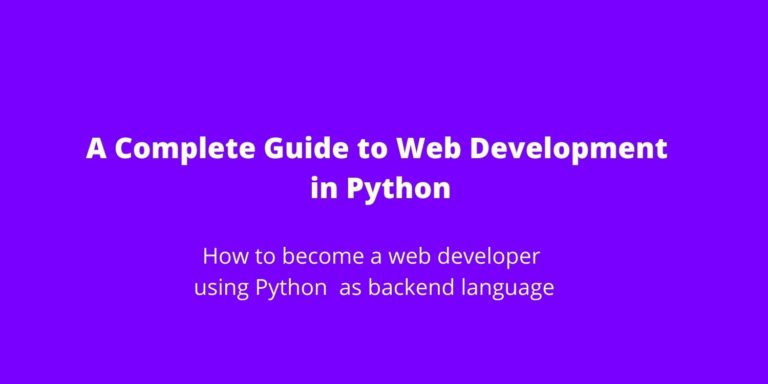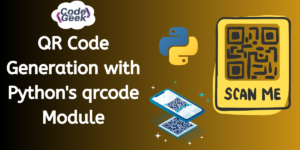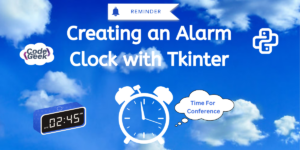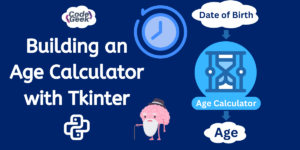Python has become the first choice of developers nowadays. Python provides abundant libraries and features with more flexibility with ease of use as well. Web development can be defined as creating a new and maintaining an existing website. Since everyone knows that this is a digital era, web development becomes a popular field. Be it an e-commerce business or organization or mobile apps everywhere web development is involved. So, becoming a web developer is a good career choice.
Web development involves front end development and backend development. The front end means what you see on the website page, things client or user interacts with. Backend means the business logic and database handling which runs on the server. There are many languages such as Java, PHP, Ruby which can be used for website development. But, python is popular because of the below reasons:
- Easy to learn
- Rich ecosystem and libraries
- Fast prototyping
- Extensive support and framework
Python provides a rich set of Web frameworks that are useful in building a web site. A web framework is a collection of built-in packages and modules that assists the development of web applications. Python web frameworks are meant for server-side technology. This provides features to handle accessing the database, URL routing, HTTP requests and responses, and web security. There are already available features in a web framework so that you need not write the entire code from scratch. It will save time while developing a website. A few popular python web frameworks are:
1) Django:
This framework encourages fast development. This is fast, secure, and scalable, and flexible. It includes a lightweight standalone web server for development and testing. You will be surprised to know that few large companies such as Instagram, Dropbox, Pinterest, and Spotify use the Django web framework.
2) Flask:
Flask framework comes with basic functionality but with flexibility. This means you can add extensions and libraries as per your requirement. Netflix, Uber, and LinkedIn are using Flask Framework.
3) Web2Py:
Web2py is a lightweight framework its core libraries, including the Database Abstraction Layer, the template language, and all the helpers amount to 1.4MB. Web2py includes a Database Abstraction Layer that makes SQL injection impossible. Web2py has no requirements for installation and configuration, has readability features for multiple protocols, and can run on Windows, Mac, Linux/Unix, Google App Engine, Amazon EC2, and any web hosting that supports Python 2.5+.
Pyramid and Turbogears are also web frameworks available. It depends on the developer’s requirement which framework is suitable for him. Django is preferred if you want a standard codebase. If you want more flexibility to codebase then opt for Flask. But, that is needed later once you are aware of all.
Let’s move to the steps and technologies to be aware of before stepping into the field of web development:
Step 1: Webpage Design
HTML:
HTML is the fundamental of websites. Every web developer should be aware of the basics of HTML and concepts of browsers, DNS, Hosting, and HTTP request and Response.
CSS:
Cascading Style Sheet (CSS) is a style sheet that describes how HTML elements will appear on a webpage. CSS controls the presentation, style, and formatting of your site, such as RGB values, border colors, background images, etc. CSS frameworks such as Materialize or Bootstrap should be known as well to speed up the development.
Step 2: Webpage Behaviour
JavaScript:
Once your webpage is designing, you want to control the behavior of your page. Right? Features such as clicking a button on a page, scrolling the page in both directions, display images in a moving carousel (as you see on different shopping websites). JavaScript basics are a must to learn. JavaScript code looks like:
OnClick is an event that will take place when the button is clicked. The source code of any webpage can be seen by using CTRL+U or right-clickview source code. There you can find various javascript, HTML, and CSS code written for that webpage.
Step 3: DOM manipulation for dynamic web pages
jQuery:
This is the most popular JavaScript library. JQuery provides methods to manipulate DOM efficiently. You do not need to write big code to modify the value of any element’s attribute or to extract HTML code from a paragraph or division. JQuery provides methods such as .attr(), .html(), and .val() which act as getters, retrieving information from DOM elements for later use. You can dynamically remove, replace, and insert the DOM element using jQuery. So you can create a dynamic web page.
We are done here with client-side technologies. Now move to server-side technologies.
Step 4: Front End Framework:
Choosing Front End Framework:
This is also recommended to learn the front end framework as well. So that you can get an idea of full-stack development instead of just backend development. Ember, React, Backbone, Vue, Angular are few frontend frameworks you can go for.
Step 5: Programming Language
Python:
You should be aware of Python basics before moving further. Python is easy to learn as it follows syntax like the English language. Python provides many IDE such as Jupyter Notebook, Pycharm to write python code with ease and user-friendly environment. There are other programming languages as well which can be used for web development but we are focusing on python due to its popularity.
Step 6: Web Framework
You can choose among python web frameworks such as Django, Flask, etc. You can implement business logic using Django or Flask. The python frameworks are robust and flexible.
Express JS, Django (python), Spring Boot (Java), Ruby On Rails (Ruby), Flask (python) are popular backend frameworks.
You should also be aware of the basics of Databases such as SQLite, MongoDB to handle your business data using frameworks.
Now you have an idea of how one can become a web developer of your choice as backend, frontend, or full-stack using python. I hope this inspires you to learn python web development in depth. All the Best!
You can refer to the below article to build a simple Django web app:
Python Django Framework Tutorial for Beginners – A Beginner’s Guide to start with Django





